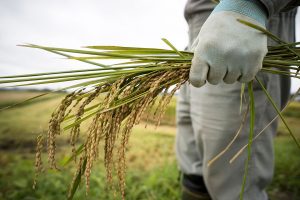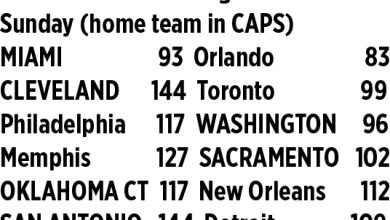Revisiting agriculture: There’s a lot of work to be done

Some days back, we happened to narrate to an elder brother the serious health issues facing immediate relatives and deaths among classmates and friends. The new coronavirus variants were discussed thus effectively throwing a damper again on family reunion plans that would bring together older persons, middle-aged sons and daughters, and grade school–aged children.
A Filipino-American who lived for more than 40 years in California, this sibling earned his MBA in America, set up an extension of his residence, and managed a home for the aged with his wife. He was, while engaged in that entrepreneurial venture, the head of the tax accounting department of an international food service firm. He had proclaimed on several occasions that he is a card-carrying Republican who never voted for Donald Trump while branding Democrats as “bleeding-heart liberals.” He had voted for Reagan as California governor. He did vote for Democrat Bill Clinton in 1992 and 1996. He was, in short, politically aware and not bound by party loyalties.
The conversation, which had by then stretched to more than 20 minutes, drifted to other topics on the home front and conflicts that had global impact: the supply chain issues created by the Russian invasion of Ukraine; inflation and North Korea’s missile test launches, among others. At the end of the conversation, my sibling remarked, “There are too many problems. Too many things happening.” That remark kept ringing in my ears for several days.
That conversation led us to reflect on the “many things happening.” Out of the many critical sectors of the Philippine economy, agriculture and rural development have received more than its fair share of expert advice. We say this based on personal experience and exposure to the food and agriculture sector.
In 1973, some 49 years ago, we joined the then Department of Agriculture and Natural Resources (DANR) as a recruit of Secretary Arturo “Bong” R. Tanco, Jr., a graduate of the Asian Institute of Management (AIM), Harvard University, and Cornell University.
Tanco had just received the mandate from Ferdinand Marcos, Sr. to launch the ambitious rice self-sufficiency program called Masagana 99 (masagana means “bountiful” and 99 refers to the program’s target yield in cavans of palay per hectare) a few months after Marcos declared Martial Law in September 1972. The strongman had just removed Vice-President Fernando Lopez as Secretary of DANR and appointed Undersecretary Tanco as Secretary. The government had swiftly taken over the Lopezes ABS-CBN TV network and power utility firm Meralco. The Vice-Presidency had been abolished in a sweeping revamp of all branches of government.
The problems then that faced the agriculture sector were production for self-sufficiency and marketing of rice, corn and feed grain, food prices, tenancy, land use, an underfunded extension service, lack of rural credit, fertilizer and pesticide availability and distribution, and the all too familiar inadequate irrigation systems.
A management man, Tanco had closely studied the variables of rice production and agribusiness in general. He had visited a Shell rice production program in Bulacan which Shell Philippines intended as a showcase for proper pesticide (a Shell product) use. But Shell added crucial ingredients to the experiment: irrigation (water being the single biggest factor credited with increases in production) which allowed the farm to harvest rice twice a crop year, supervised technical help from the extension workers of the then Bureau of Agricultural Extension (BAEX), who would periodically visit the participating farmers to dispense advice, supervised credit to finance working capital and production loans.
The experiment succeeded with great results: required farm inputs and financing came in at the time they were most needed and when technical help was available. Tanco reported to Marcos Sr. the success of Shell’s supervised rice production program and it was decided to replicate it nationwide with the heavy involvement of local officials whose tenure was at the pleasure of Marcos, just like everyone else.
Masagana 99 was launched in elaborate ceremonies at Malacañang with the diplomatic corps, including aid agencies well represented.
According to documented reports, the program did achieve self-sufficiency — but only for a few months. The first harvest saw almost an equilibrium between supply and demand. This was achieved, however, at great cost. Shortly after the initial success, reports of unpaid and fictitious loans reached the authorities regulating and supervising rural banks. Unscrupulous parties, most likely including BAEX technicians and local officials, had connived to come up with fictitious loan applications. There were documented instances of tricycle drivers and market vendors applying for loans endorsed by agricultural technicians.
Masagana 99 partly achieved its objective but it nearly ruined the rural banking system. Now, there is an attempt to revive it. Hopefully, those who will run the new program will learn valuable lessons from that episode in Philippine rural banking history.
Going back to the Department of Agriculture (DA) in April 1986, two months after the EDSA People Power uprising, we immediately realized that while quite a number of names and faces had changed in the DA and the sector itself, the problems of 1973 were the same problems that needed to be addressed in 1986.
And now come heads of six agriculture-related coalitions identifying five imperatives in the paper “Towards an Effective AgriFisheries Multi-Year Plan” that, according to Agriwatch chair Ernie Ordoñez, was requested by the DA for submission to Congress. Ordoñez says that these are not addressed, our agriculture transformation “will not happen.” The members of the coalition who provided inputs to the multi-year plan were the Alyansa ng Agikultura, the Philippine Chamber of Agriculture and Food, the Coalition for Agriculture Modernization in the Philippines, the Bayanihan Sa Agrikultura, the United Broiler Raisers Association of the Philippines, and the Movement for Water Security.
Essentially, the coalition says the following items are not sufficiently funded in the 2023 budget. Obviously, the group is saying these should be given more funds or forget about modernization of agriculture:
1. Establishing a market and business information system — producers need latest price movements and technological information to maximize returns
2. Single commodity production approach — the budget for a commodity system should consider the value chain and providing opportunities such as intercropping, processing and other income generating activities
3. Consolidation — economies of scale is needed but its implications on agrarian relationships have to be analyzed and anticipated
4. Agriculture planning — to further empower LGUs for a greater role in agriculture development
5. Proper budget use — “It would be a tragedy if much of the DA budget is lost to corruption.” This does not need any further explanation.
Yes, many things are happening. There’s a lot of work to be done.
Philip Ella Juico’s areas of interest include the protection and promotion of democracy, free markets, sustainable development, social responsibility and sports as a tool for social development. He obtained his doctorate in business at De La Salle University. Dr. Juico served as secretary of Agrarian Reform during the Corazon C. Aquino administration.




